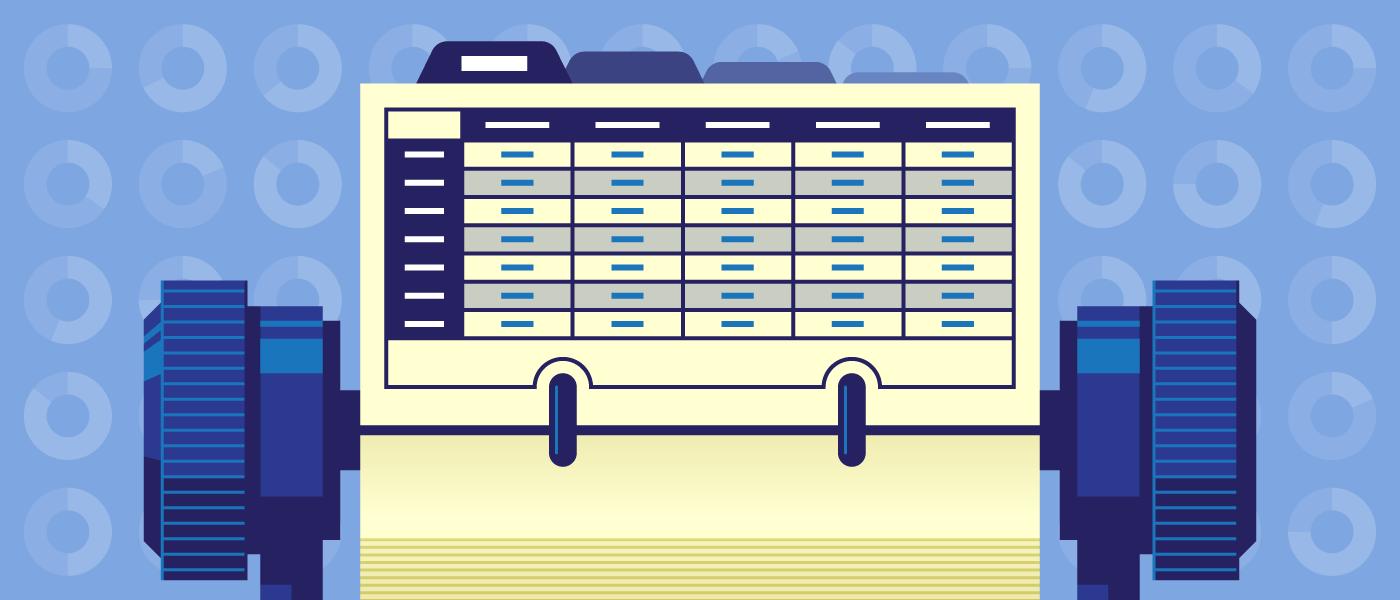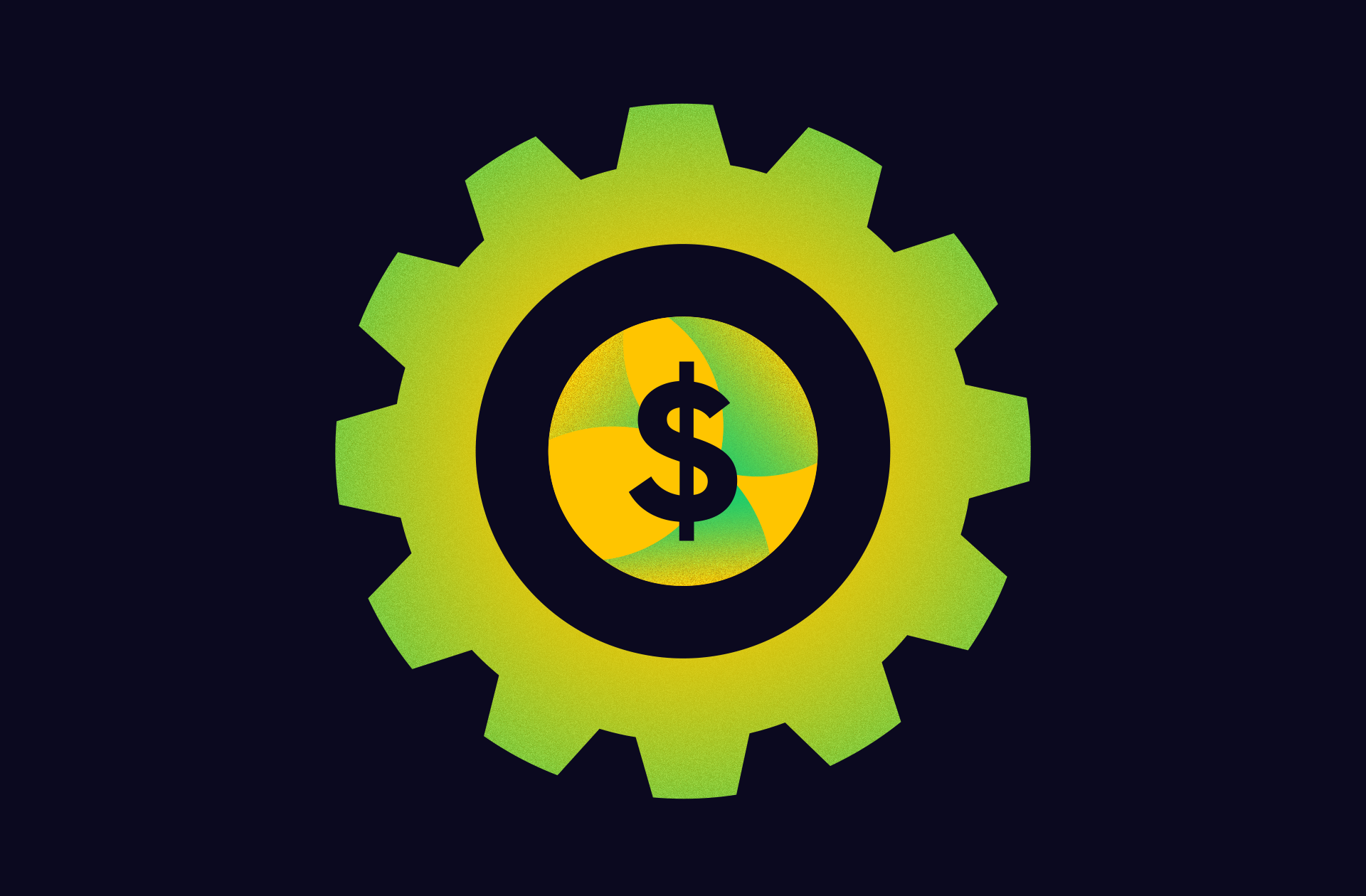A great data story starts with great data. That means it’s comprehensive, complete, and credible. But where do you find it? The best free data sources come from all sorts of places. You may have some in-house. You may come across some in an interesting study. Or you may need to start from scratch. Luckily, you can always turn to your dear friend, the Internet, to find fantastic, free data from a ton of solid sources.
We’ve used public data to create all sorts of content, from infographics to interactives, so we know what a goldmine it is. We also know that finding it can be a challenge. That’s why we’ve created this roundup—to make your search a lot easier. Here, you’ll find over 100 free data sources from reputable organizations around the world. And to make your search even easier, they’re organized by category so you can find the data you need as fast as possible. We hope it helps.
Free Data Sources: General/Academic
1. UNData: A statistical database of all United Nations data.
2. Amazon Public Data Sets: A repository of large datasets relating to biology, chemistry, economics, and physiology, including the Human Genome Project.
3. Pew Research: Public opinion polls, demographic research, content analysis, and other data-driven social science research.
4. Google Scholar: A wide array of information, including articles, theses, books, abstracts, white papers, and court opinions.
5. Datasets Subreddit: A dive into anything and everything, from English grain prices of the 14th Century to U.S. homelessness rates.
6. FiveThirtyEight: Statistical analysis that tells compelling stories about elections, politics, sports, science, economics, and more.
7. Qlik DataMarket: A place to check out data related to economics, healthcare, food, agriculture, and the automotive industry.
8. The Upshot by New York Times: News, analysis, and graphics about politics, policy, and everyday life.
9. Enigma Public: Broad collection of open data, curated for easy perusing.
10. Harvard Dataverse: A repository for research data.
Free Data Sources: Content Marketing
11. Buffer: Data insights on digital marketing.
12. Moz: Insights on SEO.
13. HubSpot: A large repository of marketing data.
14. Content Marketing Institute: The latest news, studies, and research on content marketing.
Free Data Sources: Crime
15. Uniform Crime Reporting Statistics: Statistics on violent crime, such as murder, rape, robbery, and assault; has decades of data at city, county, state, and national levels.
16. FBI Crime Data Explorer: Statistical crime reports and publications detailing specific offenses and outlining trends to understand crime threats at both local and national levels.
17. National Archive of Criminal Justice Data: Original research based on archived data concerning criminal justice and criminology.
18. Bureau of Justice Statistics: Information on anything related to U.S. justice system, including arrest-related deaths, census of jail inmates, national survey of DNA crime labs, surveys of law enforcement gang units, etc.
Free Data Sources: Drugs
19. U.S. Food and Drug Administration: Drug approvals and databases, including therapeutic equivalence evaluations for approved multi-source prescription drug products.
20. National Institute on Drug Abuse: Resources that cover a variety of drug-related issues, such as drug usage, emergency room data, and prevention and treatment programs.
21. United Nations Office on Drugs and Crime: Research, trend analysis, and forensics with global and regional data collections.
22. Drug War Facts: Thorough look at drugs and drug policy, applied to public health and criminal justice issues.
23. Drug Data and Database by First Databank: Drug data and drug databases provided with the hope of drug knowledge inspiring change in the medication decision-making process.
Free Data Sources: Education
24. Government Data About Education: Education datasets, apps, resources for the classroom, and details about paying for college.
25. Education Data by the World Bank: Comprehensive data and analysis source for key topics in education, such as literacy rates and government expenditures.
26. Education Data by Unicef: Data related to sustainable development, school completion rates, net attendance rates, literacy rates, and more.
27. National Center for Education Statistics: The primary federal entity for collecting and analyzing data related to education.
Free Data Sources: Entertainment
28. Million Song Dataset: A collection of 28 datasets containing audio features and metadata for a million contemporary popular music tracks.
29. The Numbers: Detailed movie financial analysis, including box office, DVD and Blu-ray sales reports, and release schedules.
30 BFI Film Forever: Research data and market intelligence focused on the UK film industry and film culture.
31. IFPI: Global statistics about the recording industry.
32. Statista: Video Game Industry: Statistics and facts about the video game industry, ranging from global gaming software expenditure to U.S. brand equity of Nintendo Wii.
33. Statista: Film Industry: Statistics and facts about the film industry, from the number of movie tickets sold in U.S. and Canada to the number of 3D cinema screens worldwide.
34. Statista: Music Industry: Statistics and facts about the music industry, ranging from concert revenue to record company market share.
35. Academic Rights Press: A repository of historical and current music sales data with insight on how such numbers can be applied.
36. BLS: Arts, Entertainment, and Recreation: Related industries at a glance, with statistics and datasets relevant to arts, entertainment, and recreation.
Free Data Sources: Environmental/Weather Data
37. Global Biodiversity Information Facility: An international network providing data on all types of life on Earth.
38. National Center for Environmental Health: Nationally funded data systems that have a relationship to environmental public health.
39. National Climatic Data Center: Quick links from the National Oceanic and Atmospheric Administration, covering everything from storm data to climate indices.
40. National Weather Service: Climate data, including past weather conditions and long-term averages, from specific observing stations around the United States.
41. Weather Underground: Tracked weather by regional radar, regional severe weather, and global temperatures.
42. National Centers for Environmental Information: Weather record published since 1927, including monthly mean values of pressure, temperature, precipitation, and station metadata notes documenting observation practices and station configurations.
43. WeatherBase: Travel weather, climate averages, forecasts, current conditions, and normals for 41,997 cities worldwide.
44. International Energy Agency Atlas: A look at climate change that focuses on how each country produces and consumes energy.
45. Environmental Protection Agency: Information for more than 540 chemical substances, containing information on human health effects that may result from exposure to various substances in the environment.
Free Data Sources: Financial/Economic Data
46. OpenCorporates: The largest open database of companies in the world.
47. Google Finance: Real-time stock quotes and charts, financial news, currency conversions, or tracked portfolios.
48. Google Public Data Explorer: Searchable large datasets on economic development worldwide.
49. U.S. Bureau of Economic Analysis: U.S. economic statistics, including national income and gross domestic product.
50. National Bureau of Economic Research: Macro data, industry data, productivity data, trade data, international finance, data, and more.
51. U.S. Securities and Exchange Commission: Quarterly datasets of extracted information from exhibits to corporate financial reports filed with the Commission.
52. World Bank Open Data: Education statistics about everything from finances to service delivery indicators.
53. Financial Data Finder at OSU: Plentiful links to anything related to finance, no matter how obscure.
54. IMF Economic Data: Global financial stability reports, regional economic reports, international financial statistics, exchange rates, directions of trade, and more.
55. The Atlas of Economic Complexity: Analysis of trade flows and the sectoral composition of an economy with data visualizations.
56. World Bank Doing Business Database: An incredibly useful source of information that evaluates business environment indicators around the world, including trade capabilities and costs.
57. UN Comtrade Database: Raw data on high-level trade with visualizations.
58. Global Financial Data: Covers 60,000 companies across 300 years, analyzing the twists and turns of the global economy.
59. Visualizing Economics: Data visualizations about the economy.
60. Federal Reserve Economic Database: Data on money, banking, macroeconomics, international and regional economics, etc.
Free Data Sources: Government/World
61. Consortium for Political and Social Research: Provides access to a vast archive of social science data.
62. U.S. Census Bureau: Government-informed statistics on population, economy, education, geography, and more.
63. Data.gov: Open data of the U.S. government, focuses on everything from agriculture and ecosystems to manufacturing and science.
64. Unicef: Evidence on the situation of children and women around the world to inform national and global decision-making.
65. Data Catalogs: Comprehensive list of open data catalogs in the world, curated by a group of leading open-data experts.
66. European Union Open Data Portal: Data pulled from European Union institutions.
67. Open Data Network: Government-related data with some visualizations tools built in.
68. Gapminder: Massive collection of data sources that cover everything from agriculture and employment to aid given and death.
69. Land Matrix (Transnational Land Database): A meticulously developed database of international land transactions with plenty of visualization tools.
70. The World Bank’s World Development Indicators: Huge collection of national data on hundreds of indicators, with data on every country.
71. UNDP’s Human Development Index: A ranking of country progress under the lens of human development.
72. OECD Aid Database: Visualized data regarding aid collected from governments.
73. The CIA World Factbook: Facts on every country, dependency, and geographic entity in the world; focuses on history, people, government, economy, energy, geography, communications, transportation, military, and transnational issues.
Free Data Sources: Health
74. Centers for Disease Control and Prevention: Public health data and statistics by topic, from alcohol use to viral hepatitis.
75. World Health Organization: Information, data, statistics, and reports concerning international public health.
76. President’s Council on Fitness, Sports & Nutrition: Information aimed to promote, encourage, and motivate Americans of all ages to become physically active and participate in sport.
77. Partners in Information Access for the Public Health Workforce: A collaboration of U.S. government agencies, public health organizations, and health sciences libraries.
78. Health Services Research Information Central: Selective links aimed at providing information and data regarding health services resources.
79. MedicinePlus: Health statistics ranging from percentage of obese citizens to rates at which people are catching the flu.
80. National Center for Health Statistics: Datasets, documentation, data access tools, growth charts, and resources for further vital records.
81. America’s Health Rankings: Health reports that view the nation holistically, with in-depth data and analysis.
82. Health & Social Care Information Centre: National provider of information, data, and IT systems for health and social care.
83. Medicare Hospital Quality: A database on complication rates by hospital for interesting comparisons.
84. SEER Cancer Incidence: Cancer-related statistical summaries, interactive tools, and publications.
85. The BROAD Institute: Cancer program legacy publication resources and cancer-related datasets.
86. HealthData.gov: High-value health data for entrepreneurs, researchers, and policy makers; includes data on Medicaid, Medicare, clincial studies, and treatments.
Free Data Sources: Human Rights
87. Human Rights Data Analysis Group: Nonprofit, nonpartisan group applying rigorous science to the analysis of human rights violations around the world.
88. Harvard Law School: A collection of links that cover a variety of topics, including everything from international relations and human rights data, from political institution databases.
89. The Armed Conflict Database by Uppsala University: A look at fragile and conflict-affected states that dives into minor and major violent conflicts around the world.
90. Amnesty International: Human rights information, run independent of any political ideology, economic interest, or religion.
Free Data Sources: Labor/Employment Data
91. Department of Labor: Closely watched measures of employment and unemployment.
92. U.S. Small Business Administration: Employment data from business owners’ perspective, including economic indicators and projections.
93. Employment by U.S. Census: Data that measures the state of the nation’s workforce, including employment and unemployment levels, as well as weeks and hours worked.
94. Bureau of Labor Statistics: U.S. government’s data collection of employment-related stats across regions, states, and local areas.
Free Data Sources: Politics
95. Gallup: Data-driven news based on U.S. and world polls.
96. Real Clear Politics: A look at everything from policy support to election polling data.
97. Intro to Political Science Research by UC Berkeley: Statistics and data for those interested in political science; an ideal starting place.
98. California Field Poll: Independent, nonpartisan, media-sponsored public opinion news service that examines California public opinion.
99. Rand State Statistics: Social science data for the U.S. at the national, state, and local levels.
100. Roper Center for Public Opinion Research: U.S. and international polling and public opinion survey data.
101. Open Secrets: Nonpartisan, independent, and nonprofit; nation’s premier research group tracking money in U.S. politics and its effect on elections and public policy.
102. Crowdpac: Calculates objective scores for political candidates showing their overall political position and their position on specific issues.
Free Data Sources: Retail
103. Love the Sales: Free data for insights into the global retail industry.
Free Data Sources: Social
104. Facebook Graph: API that pulls data about Facebook engagement.
105. SocialMention: Real-time social media search and analysis.
106. Google Trends: Data and trends by search engine engagement.
Free Data Sources: Travel/Transportation
107. Monthly Tourism Statistics – U.S. Travelers Overseas: A look at U.S. international air passenger statistics.
108. SkiftStats: Latest statistics, research, and data about the travel industry.
109. Search the World: Statistics, population, weather, webcams, and travel information for millions of locations worldwide.
110. U.S. Travel Association: Covers a wide variety of travel-related topics, from impacts of travel on state economies to analysis of what a stronger dollar means for the travel industry.
111. Bureau of Transportation Statistics: Transportation statistical data, research activities, and budgetary resources.
How to Start Data Storytelling
Regardless of the data you choose, turning that data into a compelling story is key. From copy to design, make sure to follow best data storytelling practices at every stage. If you’re ready to start:
- Find the story in your data set. Download our free e-book, The Content Marketer’s Guide to Data Storytelling, for more tips on bringing your data to life. You can also follow our step-by-step guide to uncover the stories in your data (and look into your own data if none of these sources were quite what you were looking for).
- Craft an effective narrative. Try these tips to turn your data into a compelling story.
- Choose the right visualization. Once you know your narrative, make sure to choose the right visual format for your story.
- Source your data correctly. Follow these 5 tips for sourcing to make sure you maintain your credibility.
- Follow best practices for data design. Learn how to design the most basic charts and graphs, and follow these tips to upgrade your visualizations.
If you need any help telling your data story, hit us up. And if you have any tips for finding great data or great data sources, leave a comment and help us share the data love.








Great Work, thank You !!!
Thank you for this!!!! amazing place to get data for your ML projects.
Happy to help!
Good
Useful
The scroll behavior and the pointer is quite annoying and distracts from normally reading through and accessing this page. Felt very dizzy simply scrolling down this page. Please consider removing them
Hi there, thanks for that feedback! We have decided we will be removing it.
Some really useful content on your Website..Your expalaining way is really really Good!! Perfect for tutorials. You should give your method for other documentaries/information .. as in for the tutorial sights like PluralSight, Udemy etc :)
Harold Burton
Thanks so much!
I really enjoyed its reading this post enough to search for writing this excellent article and helpful post thanks for sharing.
Hi Team, this is my first contact here, so I Just wanted to give a quick shout out and say i genuinely enjoy your blog posts. Can You Recommend any other SEO In Low Volume Niche blogs that go over the same topics? Thanks a ton
very nice articles
Thanks, Saranya.
Just discovered this, great list Jake!
We’ve just released a free data request page for retail data. This can be for shopping trends, online pricing and discounting or data requests on global retailers. (https://www.lovethesales.com/press/data-request).
Hope it’s a useful suggestion
Great tip, Liam. We’ve updated!
Great list, thank you. May I also suggest the Bureau of Reclamation’s new open data portal at water.usbr.gov for water-related data in the Western U.S.
Great suggestion, Deena. Thanks!
Amazing list – could I recommend Lyst’s Data Request Form (https://www.lyst.com/news/lyst-data-request/) – it’s a global fashion search engine, tracking more than 10 million global searches a month and is regularly used to help the fashion industry discover key insights about fashion and shopping trends. And it’s completely free
This is a very informational article. I was looking for ideas to make an infographic. Thanks for sharing this.
Glad it’s helpful!
It`s sites like this that make the internet the tool it was ment to be. Between this and pandas, a data analysis tool for the Python computer language, I’m cured of social media. However, you missed FRED…Federal Reserve Economic Database (fred.stlouis.org).
Great suggestion, Sid! We’ve added it.
Thank you so much for such awesome list.
Glad it helps, Josephine!
This is awesome! I also want to suggest Enigma Public (https://public.enigma.com/) as a great source for public datasets. It has the broadest collection of open data. They also produce curated lists of datasets on their homepage and in their newsletter, so you don’t get too overwhelmed about what’s out there.
Great suggestion. We’ve added it!
Unbelievable! Column Five, it’s interesting and unique content like this that makes me love you! Thank you for curating this super useful list.
You got it! We hope you do great things with it 🙂
This is so awesome! Thanks for sharing!
Hope you use it to make some cool stuff!
New top bookmark, thanks guys.
Glad to hear it!
This is super helpful. Thanks so much!